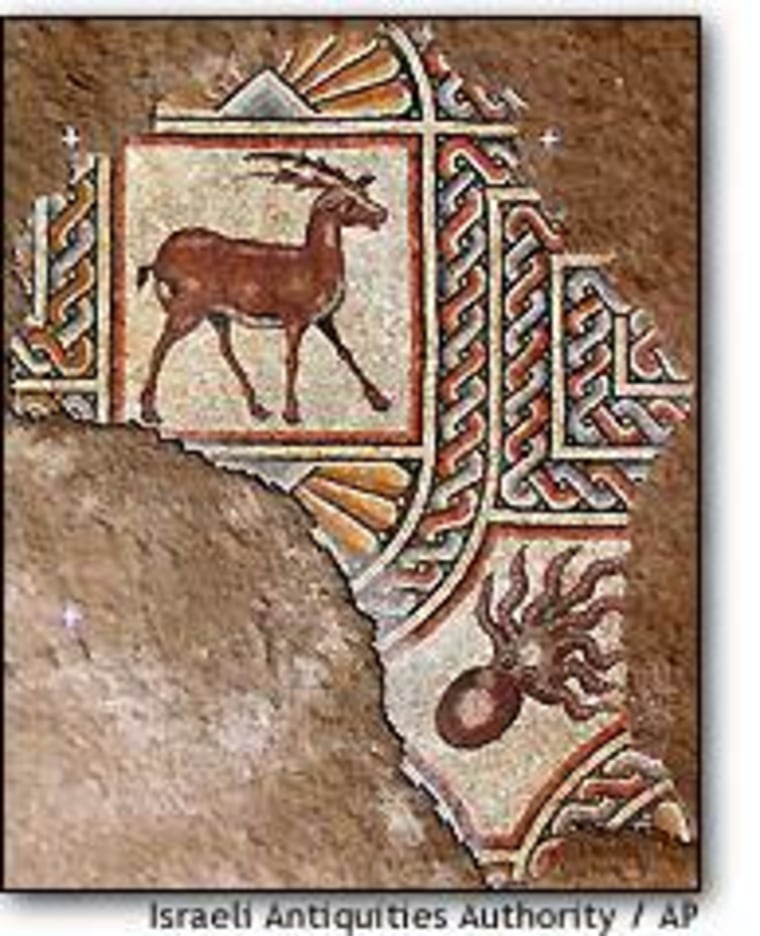Israeli Defense Ministry workers damaged an ancient Christian archaeological site while building a security barrier around Jerusalem, the Antiquities Authority said Tuesday, and work was briefly halted.
ISRAEL’S GOVERNMENT has ordered a speedup in construction of the barrier, and the haste led to the damage, according to archaeologist Yehiel Zelinger from the Antiquities Authority.
The barrier is designed to cut Israel off from the West Bank, an attempt to block Palestinian suicide bombers and other attackers from entering. The project has come under stiff criticism because it dips into the West Bank, and near Jerusalem, it cuts through Palestinian villages.
In its rush, the Defense Ministry sent workers with bulldozers into the town of Abu Dis and started work, without coordinating with the Antiquities Authority, he said, and the earth work damaged an ancient Byzantine-era archaeological site containing a monastery. The Defense Ministry denied the charge.
WHO TAKES PRECEDENCE?
According to Israeli law, the Antiquities Authority has to examine and map construction sites before work begins.
“The problem is that the army went in without our instruction ... there was some damage done and then we stopped them,” Zelinger said. “They were in a rush to build the defense barrier. ... If we had gone in before, we would have seen remains.”

The Byzantine-era monastery, 1,500 years old, covers about a quarter of an acre and the remains are 5 feet high (1.5 meters high) in the area not damaged by construction, the Antiquities Authority said in a statement.
Once it became clear that there was an archaeological site in the area, the Defense Ministry halted its operation and about 100 experts worked for three weeks to salvage the artifacts, Zelinger said.
Archaeologists completed their work in the past few days, and the ministry has resumed construction of the barrier, he added.
The Defense Ministry said in a statement that it coordinated its work with the Antiquities Authority and had alerted archaeologists to the remains at the site. The statement said that if the ministry violated the law, the Antiquities Authority should file a complaint with the police.
The security barrier — an elaborate system of razor-wire, concrete walls, trenches and fences — has been criticized by the United States, human rights groups and Palestinians, who complain that it cuts into the West Bank and separates farmers from their land, while cutting off the Arab section of Jerusalem from the West Bank.
MOSAIC TO BE REPRODUCED
The ancient monastery includes a church and outer rooms and an outdoor courtyard built around a well, Zelinger said. Archaeologists also uncovered residential areas, sheds and stables. Under the central courtyard, remains of a crypt decorated with crosses also were found, he added.
In the monastery’s central area, archaeologists discovered an elaborate mosaic decorated with geometric shapes and animals, including deer and octopi, Zelinger said.
The mosaic, which is in excellent condition, was removed from the site along with pottery and other finds, Zelinger said. The mosaic will be reproduced on concrete for display in about two years, when research is completed.
© 2003 Associated Press. All rights reserved. This material may not be published, broadcast, rewritten or redistributed.